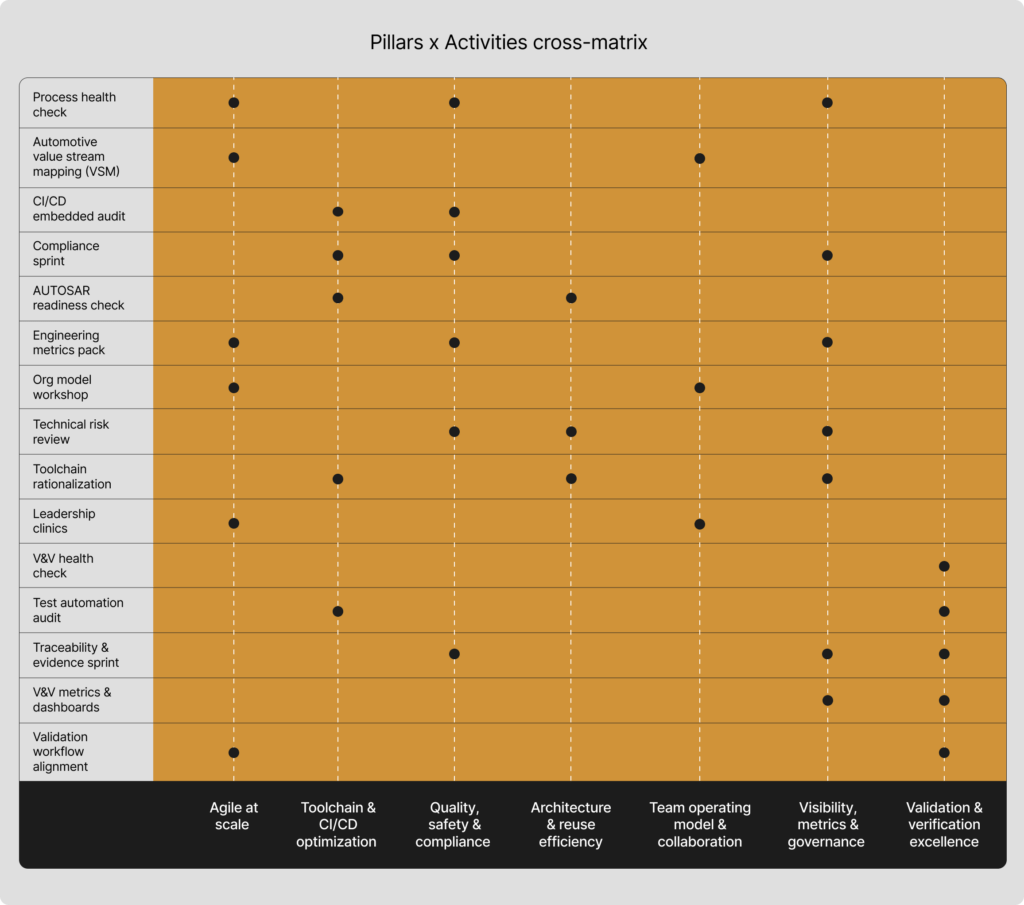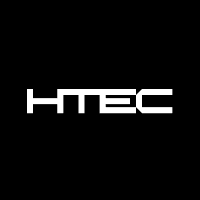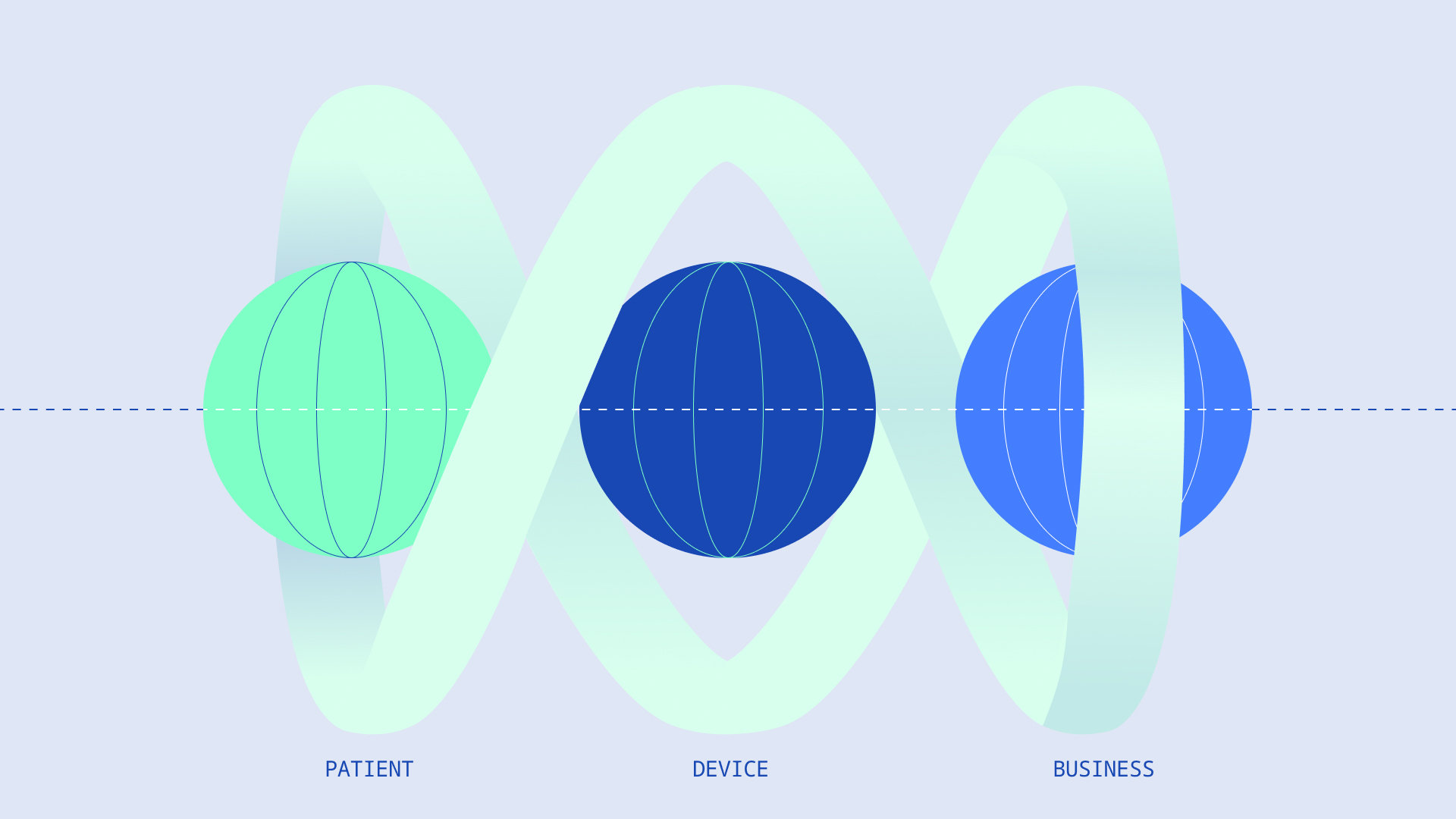The automotive industry is currently undergoing one of the most dramatic transformations in its history. The increasing reliance on software in present-day vehicles has caused a major disruption of the traditional hardware-based model of vehicle production. The ongoing rise of software-defined vehicles has created a paradigm shift with ripple effects across the entire automotive chain value, forcing OEMs to significantly rethink their traditional ways of operating.
New playbook for a changing industry
The growing role of software in the automotive industry dictates a fast pace of innovation and requires accelerated development cycles. The necessary acceleration cannot take place without major transformation of the entire automotive ecosystem, including OEMs, Tier-1 suppliers and mobility startups. From embracing agile methodologies to attracting and training a new type of talent, organizations will need to evolve to remain competitive in a fast-changing industry.
OEMs, Tier-1 suppliers, and mobility start-ups face a triple mandate:
- Deliver faster.
Customer expectations (and regulatory timelines) shrink release cycles from years to months.
- Stay compliant.
ASPICE, ISO 26262, ISO 21434, ISO 21448 – SOTIF, UNECE R155/156, and OEM-specific checklists continue to expand.
- Control cost and risk.
Platform reuse and efficient validation must offset escalating R&D budgets.
Traditional “big-bang” process-improvement programs often fail because they impose heavyweight change or ignore the unique mix of embedded, cloud, and AI components now found in vehicle platforms.
Through its experience as a technology partner for a number of organizations in the automotive industry, HTEC has identified seven critical areas of transformation and created a thorough modular framework for engineering effectiveness providing organizations with a blueprint to modernize different areas of operations of automotive software teams.
Engineering effectiveness framework
Engineering effectiveness is HTEC’s pillar-based service framework that lets executives target the bottlenecks that matter most—toolchain throughput, Agile scaling, architecture reuse, or validation maturity—while preserving delivery momentum and audit readiness.
The engineering effectiveness service can be implemented as a single-point intervention or through a multi-phase transformation journey. The typical implementation process includes the following stages:
- Discovery & readiness
- Onboarding & alignment
- Service execution
- Reporting & transition
This framework ensures measurable outcomes and visibility into ROI throughout the engagement, with concrete value measurement, KPI setup and tracking, and transparency and governance procedures and activities.
Seven pillars of transformation
Modern automotive-software delivery is too multifaceted for a single, monolithic “transformation program.” Instead, sustainable improvement comes from targeted interventions that reinforce one another — much like structural pillars holding up the same structure.
Each of HTEC’s engineering effectiveness pillars represents a self-contained transformation theme that:
- Addresses a well-defined pain point (e.g., slow CI cycles, audit overruns, architecture sprawl).
- Offers a menu of modular services—audits, workshops, sprints, coaching—so executives can start small or launch a full program.
- Produces measurable outcomes (cycle-time, compliance readiness, reuse %, engagement) tracked by the Visibility & Governance layer.
- Integrates with other pillars via shared artefacts, metrics, and cross-cutting concerns (e.g., Validation & Verification).
Pillar 1: Agile at scale
Objective: Enable large, multi-team automotive programs to deliver predictably and remain compliant while embracing iterative delivery and frequent scope changes.
Key challenges addressed:
- Objectives are missed or delayed due to external dependencies
- Agile ceremonies ignore compliance gates, causing late re‑work
- Distributed teams suffer role confusion and ownership gaps
- Velocity and quality metrics are inconsistent, hampering steering
Pillar 2: Toolchain & CI/CD optimization
Objective: Modernize and streamline build‑test‑deploy toolchains for embedded and cloud components to accelerate feedback and release cycles.
Key challenges addressed:
- Long build/flash cycles delay feedback
- Test automation is flaky across variants
- Redundant tools waste licenses and effort
- Traceability in CI/CD insufficient for audits
Pillar 3: Quality, safety & compliance
Objective: Guarantee every software increment meets ASPICE, ISO 26262, and OEM standards without crippling delivery speed.
Key challenges addressed:
- Late discovery of non‑conformities
- Scattered safety artefacts
- Manual audit prep
- Transparency and traceability
Pillar 4: Architecture & reuse efficiency
Objective: Create scalable, middleware architectures enabling high reuse and minimal re‑integration cost across vehicle programs.
Key challenges addressed:
- Platform code duplicated across ECUs
- Tight‑coupled layers hinder reuse
- Variant explosion
Pillar 5: Team operating model & collaboration
Objective: Align distributed teams around clear ownership and fast decision cycles to scale programs without coordination debt.
Key challenges addressed:
- Unclear roles and responsibilities across geos
- Ceremony overload
- Time‑zone idle queues
Pillar 6: Visibility, metrics & governance
Objective: Provide real‑time, trusted insight into delivery health, so executives can make data‑driven decisions and surface risks early.
Key challenges addressed:
- Disparate tools lack single source of truth
- Manual status decks lag real progress
Pillar 7: Validation & verification excellence
Objective: Strengthen verification & validation (V&V) processes so every increment is ‘built right’ and ‘the right system’ is built—meeting safety & customer expectations.
Key challenges addressed:
- Inconsistent traceability limits audit readiness
- Unclear ownership of test coverage
- Manual validation reports delay release
Activities (modular services)
While the pillars describe where we focus transformation effort, the activities define how that effort is executed. Each activity is a pre-scoped service module with a clear outcome, fixed level-of-effort, and repeatable playbook.
An activity catalog is highly relevant to executives because it enables:
- Mix-and-match: Activities can be combined across pillars to address urgent bottlenecks without committing to a multi-month program.
- Budget clarity: Every activity carries indicative cost, duration, and staffing, allowing rapid business-case approval.
- Predictable deliverables: Inputs → Outputs → Risks are predefined, so sponsors know precisely what they will receive and how success is measured.
- Scalability: Successful pilots can be rolled out to additional teams or sites simply by repeating the same activity playbook.
Activity catalog
- Process health check
Assessment of development processes in terms of maturity, Agile/ASPICE alignment, gaps in traceability, and delivery risk.
- Automotive value stream mapping (VSM)
Visual mapping of current state software delivery flow to identify delays, waste, and structural bottlenecks.
- CI/CD embedded audit
Review of the build and test pipeline performance, including integration with hardware setups and reliability of automation.
- Compliance sprint
Targeted short term effort to fix or close compliance related gaps (e.g., missing traceability links, test reports, audit readiness).
- AUTOSAR readiness check
Evaluation of AUTOSAR software architecture for layering consistency, configurability, tooling integration, and reusability.
- Engineering metrics pack
Definition and setup of key engineering KPIs (e.g., DORA, defect leakage, SOP milestone readiness), including dashboards.
- Org model workshop
Collaborative session to analyze and improve team structure, clarify roles and responsibilities (e.g., Product Owner, Release Train Engineer, Scrum Master), and improve role alignment.
- Technical risk review
Evaluation of current technical risks such as unstable builds, tech debt, unvalidated architecture, or missed milestones.
- Toolchain rationalization
Audit of current tools used across development, testing, integration, and compliance, with recommendations for streamlining.
- Leadership clinics
Coaching sessions for engineering and delivery aiming to improve transformation leadership, change management, and team motivation.
- V&V health check
Assessment of validation and verification practices across toolchains, test strategies, coverage metrics, and ASPICE/ISO expectations.
- Test automation audit
Review of test automation setup in CI/CD pipelines, bench hardware integration, and functional test reliability.
- Traceability & evidence sprint
Targeted improvements to close traceability and validation evidence gaps required for audits and internal sign-off.
- V&V metrics & dashboards
Setup of key verification and validation KPIs (e.g., test coverage, defect leakage, validation readiness) into dashboards.
- Validation workflow alignment
Aligning V&V stages with Agile/SAFe cadence to support testable increments and formal acceptance reviews.
Visual map of engineering effectiveness services
The following matrix illustrates the relationship between transformation pillars (verticals) and modular service activities (horizontals). Each dot represents a valid service offering that connects the two. Organizations can choose to conduct all prescribed activities within a pillar or choose those most relevant to their specific circumstances.

Traditional development processes in the automotive industry simply cannot keep pace with the growing complexity of present-day automotive software programs. At the current pace of innovation, organizations must catch up to the pace of innovation or stay behind.
HTEC’s engineering effectiveness framework provides a structured blueprint for organizations to build internal capacities that will enable them to embrace the ongoing change. Get in touch to explore how our expertise can help evolve your business operations.






